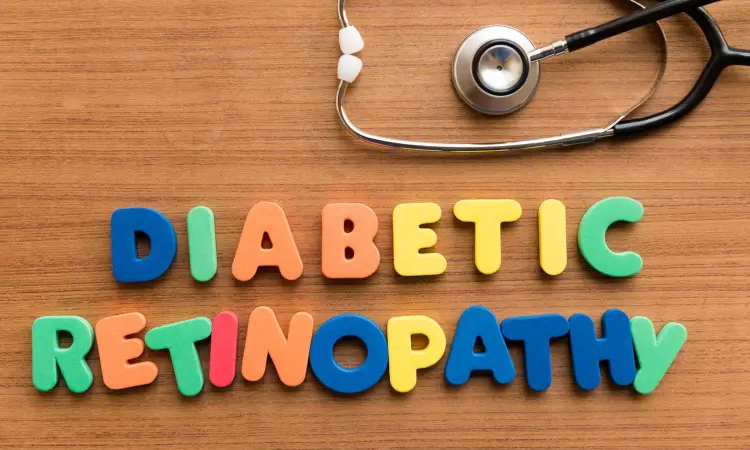- Home
- Medical news & Guidelines
- Anesthesiology
- Cardiology and CTVS
- Critical Care
- Dentistry
- Dermatology
- Diabetes and Endocrinology
- ENT
- Gastroenterology
- Medicine
- Nephrology
- Neurology
- Obstretics-Gynaecology
- Oncology
- Ophthalmology
- Orthopaedics
- Pediatrics-Neonatology
- Psychiatry
- Pulmonology
- Radiology
- Surgery
- Urology
- Laboratory Medicine
- Diet
- Nursing
- Paramedical
- Physiotherapy
- Health news
- Fact Check
- Bone Health Fact Check
- Brain Health Fact Check
- Cancer Related Fact Check
- Child Care Fact Check
- Dental and oral health fact check
- Diabetes and metabolic health fact check
- Diet and Nutrition Fact Check
- Eye and ENT Care Fact Check
- Fitness fact check
- Gut health fact check
- Heart health fact check
- Kidney health fact check
- Medical education fact check
- Men's health fact check
- Respiratory fact check
- Skin and hair care fact check
- Vaccine and Immunization fact check
- Women's health fact check
- AYUSH
- State News
- Andaman and Nicobar Islands
- Andhra Pradesh
- Arunachal Pradesh
- Assam
- Bihar
- Chandigarh
- Chattisgarh
- Dadra and Nagar Haveli
- Daman and Diu
- Delhi
- Goa
- Gujarat
- Haryana
- Himachal Pradesh
- Jammu & Kashmir
- Jharkhand
- Karnataka
- Kerala
- Ladakh
- Lakshadweep
- Madhya Pradesh
- Maharashtra
- Manipur
- Meghalaya
- Mizoram
- Nagaland
- Odisha
- Puducherry
- Punjab
- Rajasthan
- Sikkim
- Tamil Nadu
- Telangana
- Tripura
- Uttar Pradesh
- Uttrakhand
- West Bengal
- Medical Education
- Industry
HbA1C and Diabetic Retinopathy exhibit Inverted U-Shaped Relationship, reveals research

A recent cross-sectional study published in BMC Ophthalmology has identified a significant inverted U-shaped relationship between glycated hemoglobin (HbA1c) levels and the risk of diabetic retinopathy (DR) in patients with type 2 diabetes mellitus (T2DM).
The study analyzed data from 2,001 T2DM patients in southern Taiwan and found that the risk of DR peaks at an HbA1c level of 9.4%, after which it declines with further increases in HbA1c levels.
This nonlinear association suggests that while moderate elevations in HbA1c are associated with increased DR risk, extremely high HbA1c levels may not correspond to a proportional increase in risk.
The authors hypothesize that this pattern may be due to factors such as metabolic memory, where prolonged hyperglycemia leads to irreversible microvascular damage, and the plateauing effects of chronic oxidative stress and inflammation at very high HbA1c levels.
The study's findings have important implications for clinical practice and public health policy. Regular screening and early intervention for diabetic patients, particularly those with HbA1c levels approaching 9.4%, are crucial for preventing the progression of DR. Healthcare providers are encouraged to monitor HbA1c levels closely and consider personalized management strategies to mitigate the risk of DR across diverse populations.
Reference:
Ling, J., Xie, Z., Chen, X., et al. (2025). Inverted U-shaped relationship between HbA1c and diabetic retinopathy in diabetic patients: a cross-sectional study. BMC Ophthalmology, 25, Article 289. https://doi.org/10.1186/s12886-025-04079-8
Dr. Shravani Dali has completed her BDS from Pravara institute of medical sciences, loni. Following which she extensively worked in the healthcare sector for 2+ years. She has been actively involved in writing blogs in field of health and wellness. Currently she is pursuing her Masters of public health-health administration from Tata institute of social sciences. She can be contacted at editorial@medicaldialogues.in.
Dr Kamal Kant Kohli-MBBS, DTCD- a chest specialist with more than 30 years of practice and a flair for writing clinical articles, Dr Kamal Kant Kohli joined Medical Dialogues as a Chief Editor of Medical News. Besides writing articles, as an editor, he proofreads and verifies all the medical content published on Medical Dialogues including those coming from journals, studies,medical conferences,guidelines etc. Email: drkohli@medicaldialogues.in. Contact no. 011-43720751


